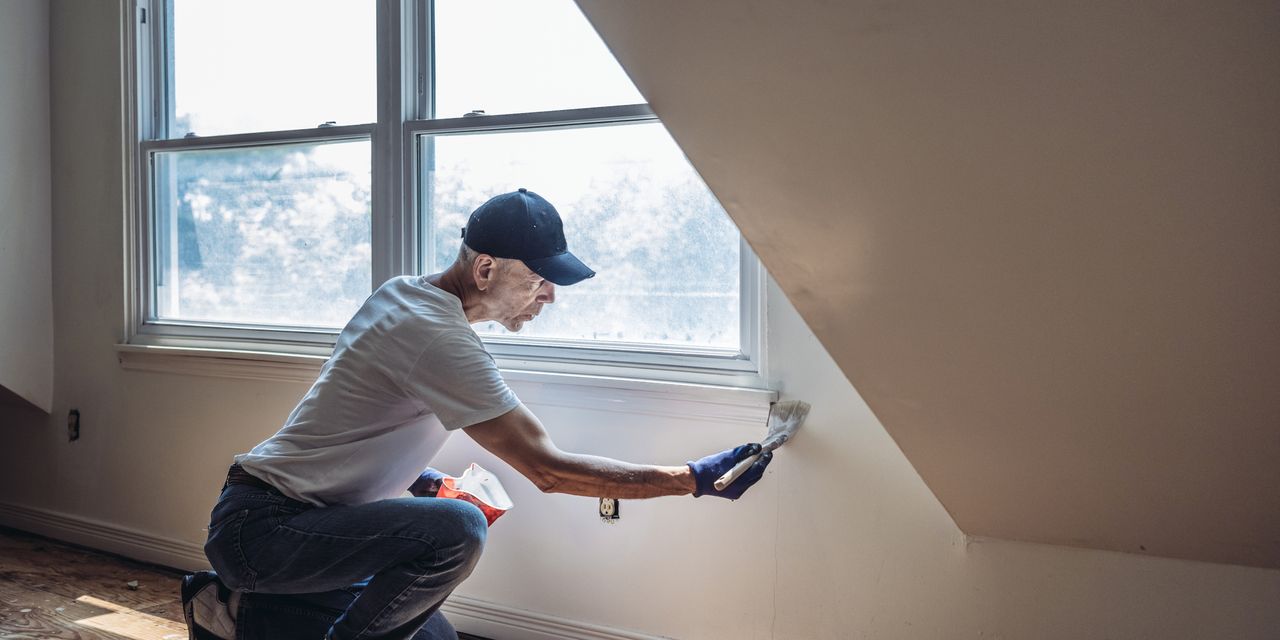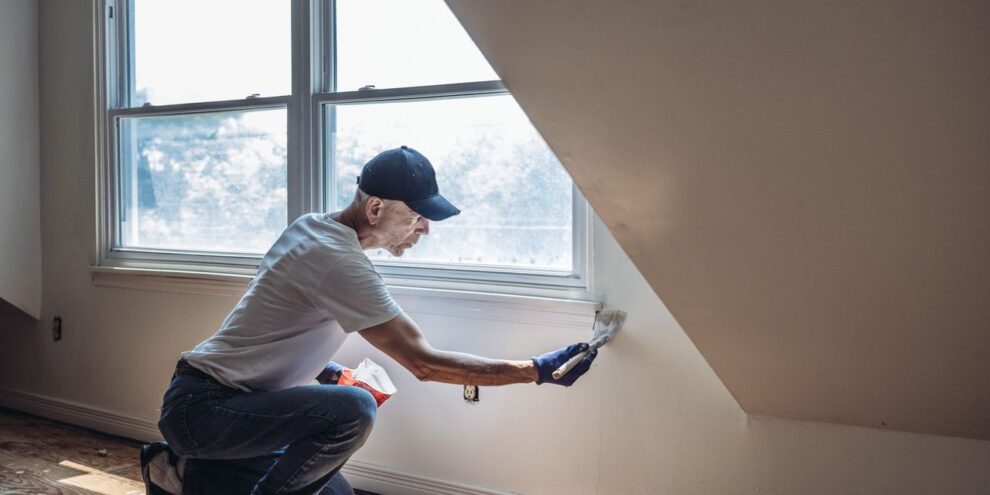
Joe and Theresa DeLaurentis knew they wanted to sell their house last spring even though the pandemic was raging. They didn’t want to be blowing leaves and shoveling snow when fall and winter came.
They considered moving to their beach house in Wildwood, N.J., but they don’t like it there in wintertime.
“We wanted to get this on the market,” said Joe DeLaurentis, who turns 60 in April. “Agents wanted us to hold off ‘til later in the pandemic. We wanted to put it on the market.”
Theresa, who will be 59 in July, had already retired as an insurance systems analyst, and Joe continues to work in construction management. With his eye on retiring someday, they could simplify their lives today.
The couple planned to move to a brand-new townhouse 1.5 miles from where they had been living, and enjoy a maintenance-free lifestyle. They’d sell their single-family mortgage-free home in Pennsauken, N.J., just outside of Philadelphia. In the meantime, they’d pay off the mortgage on the beach house.
With low inventory and historically low mortgage interest rates, it’s a seller’s market in many places, which means buyers don’t have as many choices and sellers have the advantage. In some markets, buyers have had to compete for the limited number of homes on the market.
“This year is very different from any other year,” said Trish Gesswein, sales manager with Houwzer, a real estate brokerage headquartered in Philadelphia. “It’s a seller’s market in many places. There are 30 offers on some homes, bidding wars. Lack of inventory in the suburbs is pushing the pricing up.”
Indeed, the pandemic has proved to be a boon to much of the U.S. housing market. Last month, the National Association of Realtors reported that existing home sales in November jumped 25.8% from a year ago. In addition, the median existing home price for all types of housing in November was $310,800, up 14.6% from the year-ago period. Prices increased in every region, NAR said.
“We bought the townhouse first,” Joe said. “We were able to move without going into storage. The closings were two weeks apart.”
They were going to sell their home of 32 years ‘as is,’ but with some time to spare, decided to “add a little lipstick” to it, Joe said.
If you’re selling your long-time house in retirement or leading to retirement, do you have to stage it or make more than minor improvements during the pandemic to sell it? Does it depend on the market?
For Joe and Theresa, getting their three-bedroom, two-and-a-half bath ready to sell didn’t require much work.
“We had a virtual tour with a Realtor. She said, ‘You don’t really have to do much.’ The key: They sent in a professional photographer. Nothing crazy. Don’t use an amateurish photographer,” Joe said.
They made minor improvements.
“We repainted every room, decluttered, redid the laundry room — patched and painted, and installed new flooring,” he said. “It was do-it-yourself. We did it.”
In fact, remodeling experts and real estate agents agree.
“Do-it-yourself projects make a lot of sense,” said Dennis Gehman, president of the National Association of the Remodeling Industry. “Do small things,” he said. “Painting, new hardware on cabinets, flooring.”
As for staging, opinions vary on whether to spend money on it. Theresa took on the task. “My wife staged it perfectly,” said Joe, even placing flowers on the bed on a tray.
Joe and Theresa had three offers in two days, and ultimately sold their early 1980s house for $275,000. Their new three-story townhouse with three bedrooms and two-and-a-half baths started at $265,000. With the upgrades they chose, the final price was $311,000.
Before putting your home on the market during the pandemic, here is what experts advise:
Consider your circumstances. How close are you to retirement? How quickly do you want to move? “It really depends on the situation,” said Trish Gesswein, sales manager with Houwzer. If you are one year away from retirement, don’t do a complete renovation or remodeling, she said.
Check the roof and all the mechanicals. Make sure there are no leaks in the roof and that the HVAC and hot water heater, and major appliances are working properly. “It will come up in your home inspection,” said Gesswein. “Don’t just replace them because they’re old. If it’s not broke there’s no reason to fix it.” Sometimes sellers offer a home warranty that covers the first year for buyers at the closing. “If something breaks in the first year, the warranty will cover the replacement cost.” The home buyer will pay $100, for example, toward the total cost.
Research comparables in your neighborhood. “You have to look at the market,” said agent Debora Edwards of Long & Foster, Bethesda, Md. Find out how long it typically takes for houses to sell in your neighborhood. Known as “days on market,” this is the number of days that a property is listed on the local multiple listing services (MLS) until the seller has obtained an offer and a signed contract. Check listings in your area as they usually include how many days a property has been on the market before it sold or how long it has been on the market currently.
Declutter the entire house. “You want to make it look like it’s ready to be moved into,” said Edwards. Generally, remove family photographs, clear out closets, remove old, worn carpeting or rugs and window treatments, especially those that are dated.
Invest in minor updating. “You don’t have to spend big dollars,” said Dennis Gehman, owner of Gehman Design Remodeling in Harleysville, PA. “Take a look at the wear and tear. If there are a half-dozen tiles that are cracked, replace them.” If the home looks worn and not cared for, buyers can “begin to wonder if there are other things” that have not been fixed in the house. Re-caulking the bathroom, adding a new shower curtain with a curved rod rather than a glass door that is difficult to clean can make a difference.
Get the best professional photographs. “Make sure the house looks as good as possible in the photographs,” said Trish Gesswein.Looking ahead to retiring someday, Joe DeLaurentis said, “I make enough so I can support the townhouse. My 401 (k) is in good shape.” In the future, they may sell the townhouse, and move to the shore. Meanwhile, they’re enjoying their brand-new home.
Harriet Edleson is author of the forthcoming book, “12 Ways to Retire on Less: Planning an Affordable Future” (Rowman & Littlefield, May 2021).A former staff writer/editor/producer for AARP, she writes for The Washington Post Real Estate section.





